Nearly 60% of consumers say Amazon is their first stop when shopping online. With over 300 million customers worldwide and nearly 2.7 billion site visits per month, the ecommerce giant offers an unparalleled global stage for brands and retailers. But leveraging Amazon’s platform effectively and achieving brand goals across catalogs containing thousands of products is a daunting task.

Each function of your ecommerce team faces unique obstacles when identifying and executing the most profitable Amazon strategies. Without thorough insight into the market, agile decision-making is an overwhelming challenge.
That’s where data comes into play.
In this post, we’ll explore how to use data to enhance:
- Keyword and SEO strategy
- Amazon advertising performance
- New product development
- Market and competitor research
- Mergers and acquisitions due diligence
Improving keyword strategy with data
Search engine optimization (SEO) and keyword efforts play a crucial role in driving brand awareness and sales on Amazon. SEO is vital for driving organic traffic to your Amazon product listings, while prioritizing high-value keyword targets is paramount to the ROI of advertising campaigns. Here are a few valuable data sources to use as you plan around keywords:
Keyword searches
Identify relevant keywords that are highly searched by potential customers and incorporate them into your product titles, bullet points, descriptions, backend search terms, and advertising campaigns. Look at data points like search volume over time and PPC bid estimates.

Using a tool like Jungle Scout Cobalt, you can see the search terms that lead shoppers to your ads, along with the costs and sales attributable to those keywords. This data can generate ideas for additional keywords to target or help you identify keywords that are not delivering a good ROI and should be added as negative targets.
Customer reviews
Understanding the words and phrases that customers use when talking about your products can give insight into the features or characteristics that are most important to them (and that other consumers are likely to search by).
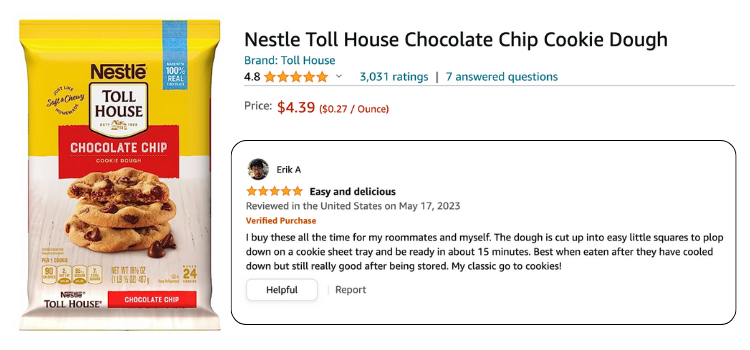
Analyze customer reviews and feedback to identify keywords that resonate with your target audience. Incorporate this language into your product titles, bullet points, descriptions, backend search terms, and ad targets to improve visibility and relevancy.
Share of voice (SOV)
Share of voice data is the perfect fuel for boosting your keyword tactics and SEO strategy. Use a tool like Cobalt to review data on your brand’s share of voice for your top keywords, as well as data on your competitors’ ownership of those keywords in Sponsored Brands, Sponsored Products, and organic search results.
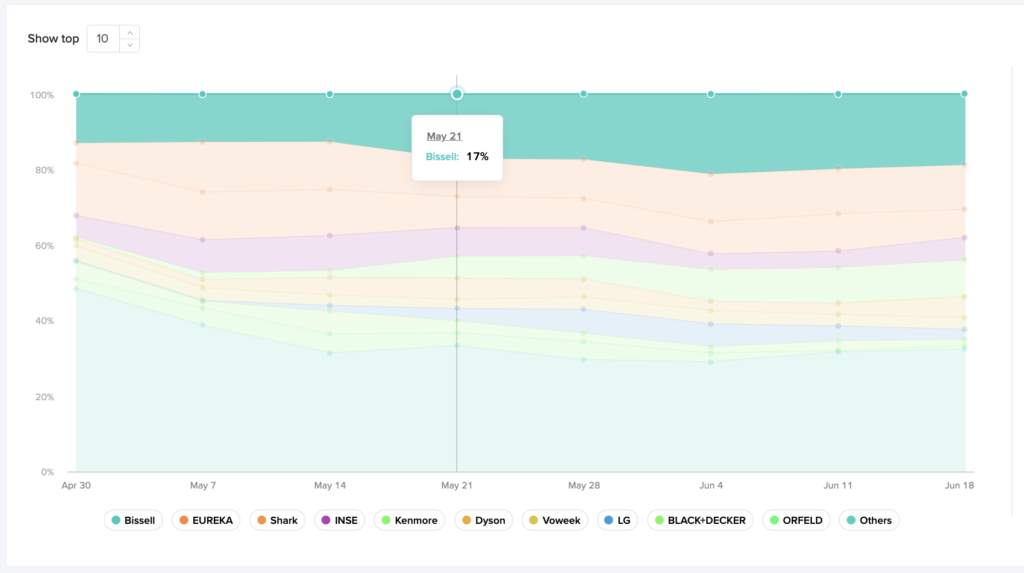
If your brand’s SOV for a particular keyword is low, look into increasing PPC investments or optimizing listings to grow SOV. Analyzing share of voice data also lets you know which keywords you’re already dominating, so you can focus efforts on those that most need investment and attention.
Optimizing ad performance with data
Pay-per-click (PPC) and DSP advertising are powerful tools for increasing visibility and driving sales on Amazon. Here are a few of the best data sources for optimizing your advertising strategy:
Budget usage and return on investment
Perhaps the most important element of your Amazon advertising strategy is optimizing your return on investment (ROI).
Almost 40% of brands selling on Amazon say they’re concerned about rising ad costs, and nearly 30% are concerned about Amazon search results increasingly favoring paid results over organic.
Combatting these concerns requires steadfast attention to metrics like advertising cost of sales (ACoS) and return on ad spend (RoAS). Dedicate more budget to campaigns that are generating the highest RoAS or build campaigns around the products and targets that have the lowest ACoS.
Review data like clicks and conversions to determine if shoppers are more likely to click on certain ads and purchase certain products on different days or times of the day. This can help you outline granular bid adjustments that drive up the ROI for those campaigns. Then implement those bid adjustments through advertising automation – like Cobalt’s – to improve ROI by automatically adjusting bids according to your specifications (for example, increase the bid for this keyword if clicks for this campaign are below 10/day).
Brand analytics
In Amazon Brand Analytics, your team can dig into several useful reports for building and optimizing ad campaigns:
- Alternate Purchase Report: See which products customers buy after viewing yours. Use this data to determine the top competing items for your products and build campaigns targeting those products.
- Market Basket Report: See which products customers frequently buy together. Use this to optimize your Store and campaigns to display those products together, as well as to build and promote product bundles.
- Repeat Purchase Behavior Report: See which products customers tend to buy repeatedly. Use this to identify opportunities for retargeting and reminding customers to repurchase.
Ad tests
Testing produces hard data that directly compares your brand’s ROI for different ad tactics and gets to the heart of what drives sales. For Display ads, test different imagery and product groupings. For PPC ads, test different targeting tactics to see which are the most effective for specific ad types or products.

Tools like Cobalt open up advanced targeting features that you can use to test targeting on search terms, product categories, metric thresholds, time of day, and more. Run test campaigns for at least two weeks before analyzing results.
See which ad products and strategies deliver the highest RoAS on Amazon.
Using data for product development
Launching new products requires a deep understanding of demand, competition, and market dynamics. Here’s the data that will enable your team to plan successful product launches:
Market intelligence
Data like the top brands in a market niche, the competitiveness of a category, sales and revenue over time, and trending products will help you gain an overview of the market to find emerging categories or gaps that your brand can fill. Using a market intelligence tool like Cobalt will enable your team to do this research effectively at scale and allow you to access as much as two years’ worth of historical trends data to plan from.
“Cobalt helped us determine how to start a new product launch off on a high note. We used it to do keyword and competitor research into a category that we saw as underserved on Amazon. We just launched a few weeks ago and already have great traction in a newer category, with a product price point over $50.” – Droo Gibbs, Marketplace Lead, HLC Bike
Seasonality
Historical data is incredibly valuable in determining seasonality that could impact the launch timeline and projected sales of a new product. Look at long-term revenue and sales trends to see if consumers are more or less likely to buy certain products depending on the time of year.
Advertising data is also valuable for gauging seasonal spikes in advertising competition – and thereby estimating seasonal adjustments you will need in your advertising budgets.
Look for reports like Jungle Scout’s Seasonal Amazon Advertising Report to identify seasonal advertising trends.
Consumer trends
Consumer trends data should always be a driving force of your Amazon strategy. Engage with your target audience through surveys or focus groups to understand their pain points and preferences. Analyze your brand’s and competitors’ Amazon reviews to identify areas for improvement or potential new product ideas. And leverage external resources like industry reports to gain insights into overarching consumer trends.
See how consumers are shopping right now with Jungle Scout’s Quarterly Consumer Trends Report.
Collecting data on competitors
Monitoring competitors is crucial for finding new opportunities and making successful decisions on Amazon. Here’s the data that will help your team conduct effective competitor research:
Market share
Analyze market share data to understand your brand’s performance relative to competitors. Track changes in market share over time to identify opportunities for growth or areas where you’re losing ground. Look at data for the current leaders in your categories, as well as historical data on how your competitors’ market position has fluctuated over time.
Be sure to pay attention to brands that are growing but not yet leading in market share. This can reveal new competitors you should start tracking and new trends or strategies to leverage.
Get data on Amazon trends and market share leaders:
Data Download: Wedding Products
Brand-level metrics
Using a tool that allows you to access and filter brand data down to the product level, like Cobalt, will help you dive deeper into the revenue trends and top-selling products of established and emerging competitors.
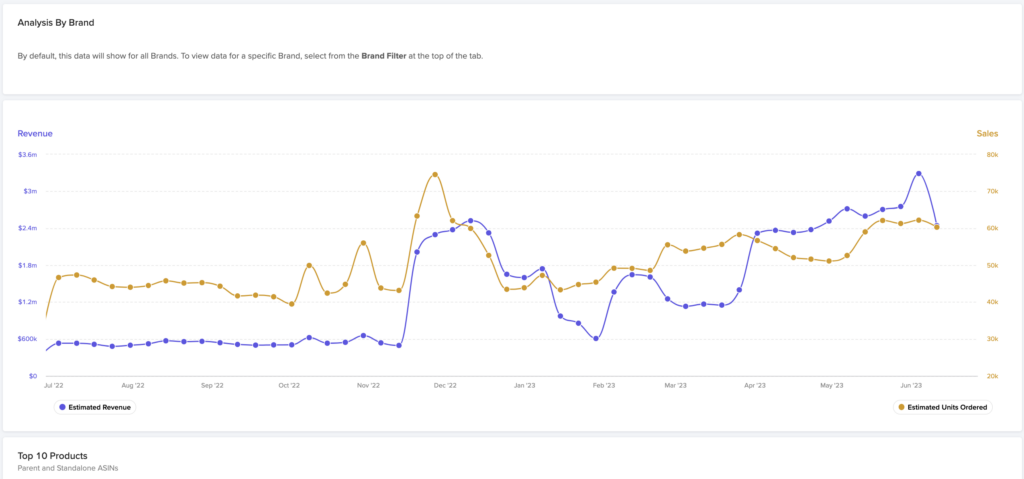
Look at revenue, sales, reviews, pricing, and best-selling products across different time periods to see if a competitor’s performance is improving or declining. This can also help you plan for major sales events like Prime Day, Black Friday, and more by providing insight into how competitors have historically adjusted their pricing and other tactics during those times.
Targeting strategies
Study the SEO and keyword targeting strategies of your top competitors. Analyze their product listings to identify the keywords they are targeting and look for opportunities to outperform them in search rankings. Look for insights like share of voice data and estimated PPC costs to assess your competitors’ advertising strategies and identify ways to can gain a competitive advantage.
In Cobalt, you can input a list of keywords and see which brands are ranking for those keywords, which are targeting them in ad campaigns, and how much share of voice each brand owns (both in organic search and advertising placements). Use this data to build and optimize your own campaigns to stand out in the marketplace.
Product & pricing trends
Monitor competitors’ pricing strategies and product trends. Look at their most popular products to find opportunities to position your products as preferable alternatives through Sponsored Products ads targeting their products and optimized listing page content for your own products.
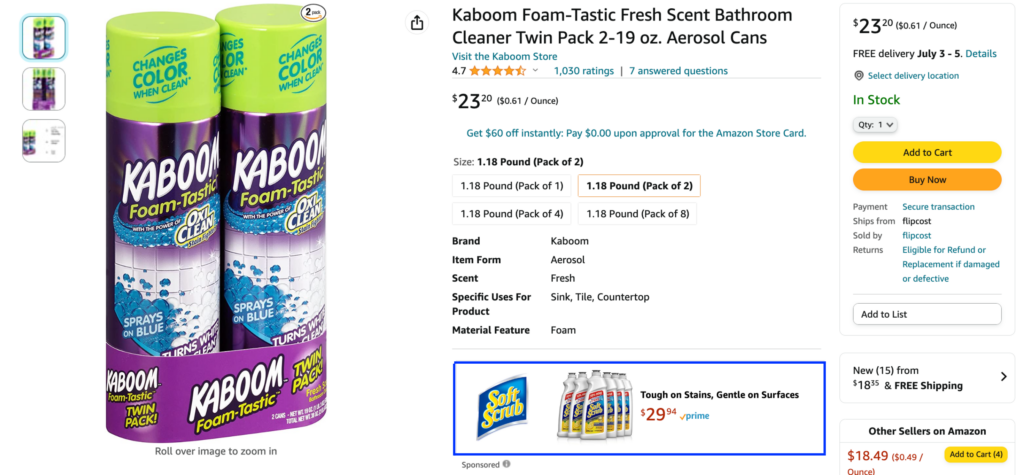
For products that are top revenue drivers for your brand, consider increasing your advertising budget to stay ahead of competitors or running promotions to offer consumers a lower price than the competition.
Gaining data insights for acquisitions
When evaluating a brand for acquisition, data is the only way to confidently minimize risk and maximize success. Here are some key data points to consider for mergers and acquisitions due diligence:
Market potential
Evaluate the market size and growth potential of the brand or product category you are considering. Look for market trends, customer demand, and future projections. Using a tool like Cobalt, you can expand your research from a single brand out to an overview of the market(s) that the brand sells in. You can see competing brands, market share, best-selling products, seasonal revenue trends, and more to help you understand not just how the individual brand performs but how its performance stacks up against the marketplace as a whole. This will help you determine whether the brand and its market potential align with your overarching strategic goals.
“Cobalt data has been fantastic for when we need to provide answers to our executive team when going through an acquisition. It gives us the exact size of the market on Amazon and ASIN-level details that we need for forecasting.” – Elliot Frey, National Amazon Account Manager, Rawlings Sporting Goods
Product performance
Examine individual performance metrics for the products sold by the brand you are interested in acquiring. Use a tool like Cobalt to identify the best-selling products and define which are responsible for the majority of revenue. From there, tunnel down to the product level to review sales and revenue data, as well as data on the performance of advertising campaigns targeting those products.

This data will help you uncover quick-win and long-term opportunities to optimize product listings, ad campaigns, or promotional strategies post-acquisition.
Brand reputation
Analyze brand reputation and customer sentiment by looking at customer ratings and reviews. Look for any common themes that point to the brand’s unique selling points that could be leveraged in building visibility or highlight where improvements would need to be made to products, customer service, or other factors to generate growth. You can also look for feedback and conversations about the brand on social media, forums, and review sites to assess general perception among consumers.
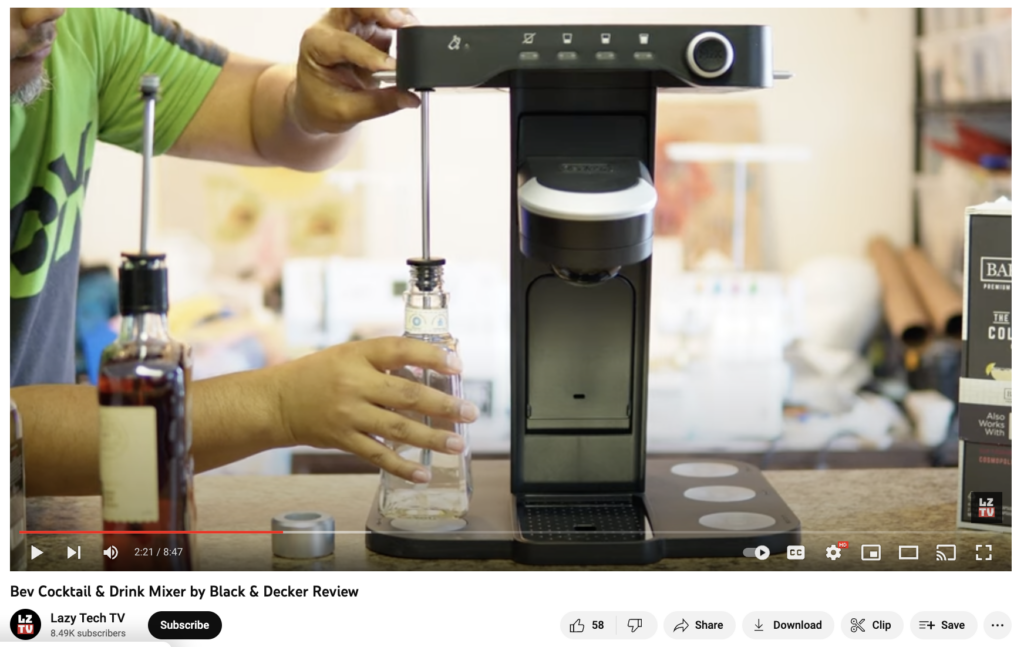
Amazon data for ongoing analysis
Identifying your team’s top challenges with the Amazon channel and developing strategies to use data to overcome them is a continuous process. As Amazon and all of ecommerce continue to evolve, you and your team should monitor the horizon for new challenges and fine-tune your strategy.
Market insights and competitive intelligence data are at the heart of any successful Amazon strategy. By accessing the data you need to achieve your departmental goals, your teams will be well-equipped to meet your company’s overarching objectives now and in the future.
Learn how Jungle Scout Cobalt can help: Explore our platform or Request a demo.
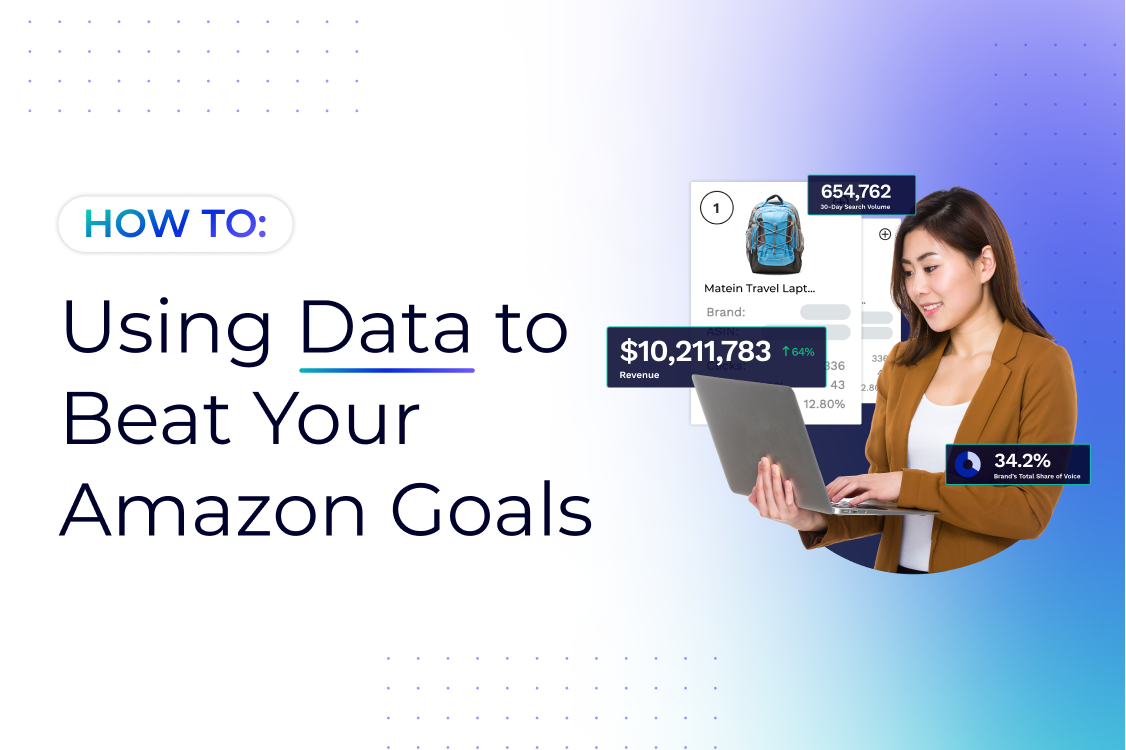
 No Comments
No Comments